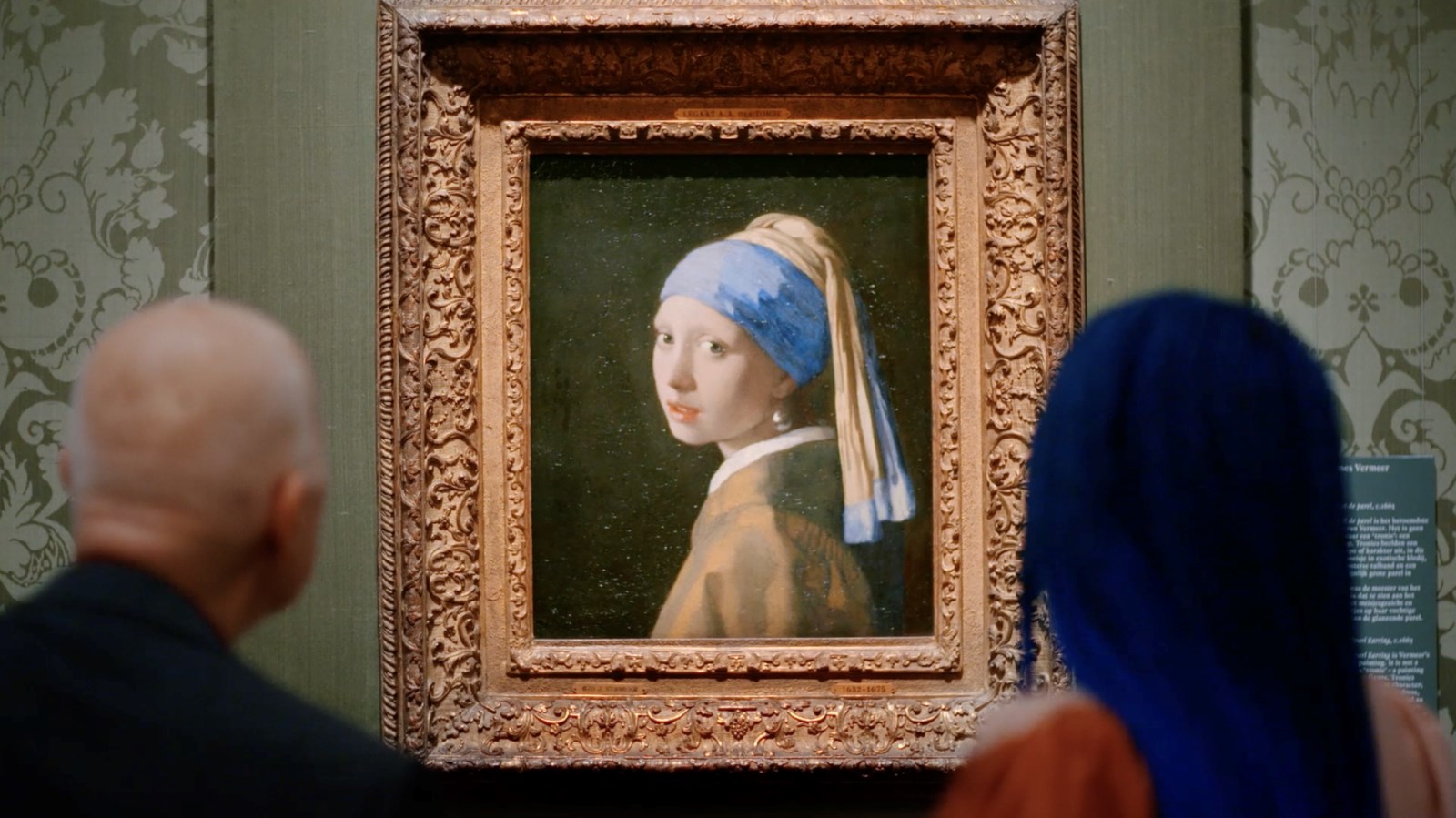Close to Vermeer
(Netherlands, 78 min.)
Dir. Suzanne Raes
How can an art fan be sure that Johannes Vermeer painted Girl with a Pearl Earring? Sure, the movie with Scarlett Johansson and Colin Firth supports the idea. But only an expert with a fine attention to detail and keen intuition can distinguish one artist’s use of light, colour, texture, and shading from another’s. Close to Vermeer unpacks the ins and outs of authorship by putting the late Dutch painter under the microscope. As the curators of Amsterdam’s Rijksmuseum seek to mount the world’s largest collection of Vermeer paintings of a 2023 show, they thoroughly analyse a number of disputed works. Curators Gregor Weber and Pieter Roelofs and conservators Abbie Vandivere and Anna Krekeler, along with experts like Essential Vermeer curator Jonathan Janson, dive into the question of what makes a Vermeer a Vermeer as they prepare to celebrate the artist on an unprecedented scale.
Anyone who loves to spend time in a gallery simply must see this documentary. Close to Vermeer gives audiences an insider’s view of the scope of work entailed with curating a major exhibition. The film begins with Weber and Roelofs seated at a table examining a rogue’s gallery of postcards. They’re looking at all the known Vermeer paintings available (one was stolen) and discerning the prized pieces for their show. What’s interesting about this exhibit is that the curators aren’t simply chasing masterpieces. Rather, they aim to build a narrative about an artist’s journey. They’re as keen to show the minor works as they are the major ones. By looking closely at Vermeer’s body of work, the documentary shows the artist’s growth and, to the frank dismay of some curators, his decline. But the curated corpus humanizes the artist while illustrating his unique talent.
Curators Become Detectives
Close to Vermeer largely follows Weber as he visits museums to inquire about borrowing their Vermeers. Some curators love the idea of helping bring all the Vermeers together. Others crush Weber’s dreams. A Vermeer can be a “destination piece” that attracts patrons to a gallery, while other paintings were acquired with the stipulation that they never leave. With each query, the film observes the process through which curators, conservators, and historians determine authorship. Very little is known about Vermeer’s biography, so the experts shape a narrative by understanding Vermeer’s techniques and by speculating about his motivations.
Painting by painting, the art aficionados pry the art from its frame and scan the work for forensic analysis. Cutting edge technology allows them to see layers of paint, but also stages of progress. They can tell when Vermeer touched something up, or if a contested element was added later, either by Vermeer or by somebody else. Or they can tell if two pieces were painted on canvas from the same source. This process lets the curators make new discoveries about works that are nearly 400 years old. For example, they find a breakthrough with Girl with a Pearl Earring by observing that the background is really green, not black. Upon closer inspection, they can discover folds in the background—the subject was therefore seated in front of a dark green drape. Vermeer’s sense of detail, and his ability to capture light and texture, lend signatures to his work.
If Not Vermeer, Who?
At the same time, Close to Vermeer captures some hot debates. The curators struggle, for example, with Young Woman Seated at the Virginals. The work, painted circa 1670, is a prized piece for collector Thomas Kaplan. He proudly agrees to loan his Vermeer to the exhibit and has grand stories about its acquisition. However, Weber’s face indicates the collector may have been snookered. As he joins experts in studying the painting, they find it awfully derivative of Vermeer’s work. It has all the makings of a Vermeer in terms of subject, framing, and composition. However, the details don’t tell a story and the technique is comparably sloppy. The choice is attribute the painting to someone else or to agree that Vermeer didn’t always produce masterpieces.
Similarly, Close to Vermeer observes the subjectivity entailed in these high stakes conclusions. The film finds great drama when the Dutch experts clash with the American curators over Girl with a Flute. The Americans notice key elements, like shoddy use of green earth in the skin tones, that suggest someone in Vermeer’s circle—an apprentice, perhaps—was attempting his technique. Weber and Janson, meanwhile, see the green earth as evidence of Vermeer’s hand. They know that nobody else at the time used this material to capture skin tones. The debates become so fraught that, at one point, the cameras aren’t permitted to see or hear what happens behind closed doors. But the drama proves fascinating: can art lovers admit that even the greatest artists are capable of lesser art?
The Art of It All
No matter which side audiences find themselves in the authorship debate, they should have a grand time watching experts dive into their passions. It’s fun to see art lovers nerd out over Easter eggs, paint hues, and canvas edges. Moreover, at a time when most documentaries concern themselves with the business of art, rather than, well, the artistry of art, director Suzanne Raes’ approach shows audiences why some painters are considered masters. People rarely mention prices in this documentary.
Much like Brian D. Johnson’s The Colour of Ink, the film really gets close to the materials. Macro-level photography puts viewers alongside the experts in the authorship debate. Audiences can see the textures of Vermeer and the details of his work like never before. The film is like having the closest view possible in a gallery. When Weber approaches paintings for a close up, alarms go off, but Raes’ camera gets so near to the canvas that one can practically smell it. You can’t do that in a gallery!














